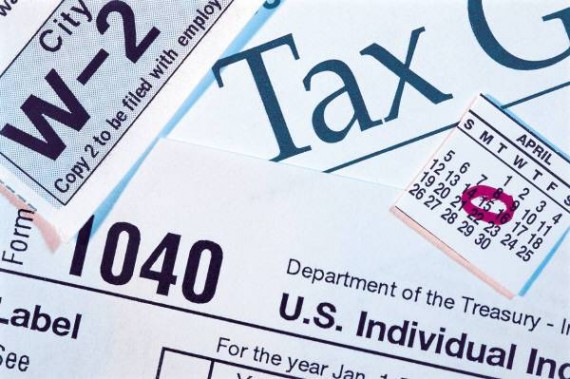GE Paid Taxes in 2010 After All
The story that GE paid zero taxes last year despite mega-billion dollar profits is completely untrue.
The story that GE paid zero taxes last year despite mega-billion dollar profits made the rounds on the blogs, late night comedy circuit, and Sunday talk shows this week after the story was reported by the NYT. There’s a wee problem with it, however: It’s completely untrue.
Pro Publica and Fortune team up to explain:
Did GE get a $3.2 billion tax refund? No.
Did GE pay U.S. income taxes in 2010? Yes, it paid estimated taxes for 2010, and also made payments for previous years. Think of it as your having paid withholding taxes on your salary in 2010, and sending the IRS a check on April 15, 2010, covering your balance owed for 2009.
Will GE ultimately pay U.S. income taxes for 2010? After much to-ing and fro-ing — the company says it hasn’t completed its 2010 tax return — GE now says that it will pay tax. (For more on GE’s tax strategies, see GE’s taxes: A case study)
Why should you care about this? Because we all have a stake in how this plays out. Thanks to the uproar over GE, we now risk ending up with legislation that targets GE but produces all sorts of unintended consequences. Public rage can make for bad law. For example, the Alternative Minimum Tax was adopted in 1969 amid an uproar generated by a Treasury report that said 155 wealthy families had paid no income tax. But the bill, badly designed and badly amended, has morphed into a mess that affects millions of middle- and upper-middle-class families, but not the really-high-income tax-minimizing families. They’re not affected because the AMT fades out of the picture for families with income of $600,000 and up.
Now, let’s take it from the top, slowly, and sort this all out.
GE’s 2010 financial statements reported a $3.25 billion U.S. “current tax benefit,” which is where the Times, which declined comment, got its $3.2 billion “tax benefit” number. But a company’s “current tax” number has nothing to do with what it actually pays in taxes for a given year. “Current tax benefit” and “current tax expense” are so-called financial reporting numbers, used to calculate the profits a company reports to shareholders.
They have nothing to do with what a company sends to (or receives from) the IRS. “Any correlation between the ‘current tax expense’ and the current tax payable is likely coincidental,” says a leading tax authority, Ed Outslay, Deloitte/Michael Licata professor of accounting at Michigan State University’s business school.
Ed Morrissey, who tipped me to the story on Twitter, adds:
So how did the Times get the story so wrong? Well, thanks to a ludicrous American tax code, it’s extremely complicated to analyze any company’s tax liabilities even from the inside, let alone from the outside. The Times apparently got confused by a report showing a $3.2 billion “tax benefit” in 2010, which they mistook for an after-profit credit. The term actually refers to estimated pre-profit deductions and credits, which lower the eventual taxable income number on which GE gets billed by the IRS. It’s roughly analogous to mistaking personal itemized deductions on a tax return for a refund figure.
That doesn’t mean that the issue of actually getting $3.2 billion in deductions and credits in a single year isn’t an important topic, and the lack of clarity on GE’s tax situation — even at GE, which Fortune and ProPublica describe in some detail — once again show the need for a flat, simple, and reasonable tax code that allows businesses to compete evenly without Congress picking winners and losers through hidden subsidies and penalties enforced at the IRS. But the Times’ reporting gave a completely false impression of GE’s actual status, and should be corrected.
The fact that GE has a veritable army of tax lawyers on its staff is a rather clear signal that something is very wrong with the system.
UPDATE: Steve Hynd alerts me to a sidebar story at ProPublica that expands on my last point: “5 Ways GE Plays the Tax Game.”
Strategy No. 1: The Tax Department as Profit Center
GE’s tax department is well known for its size, skill and hiring of former government officials. About 20 years ago, GE’s tax employees totaled a few hundred and were decentralized. Today, there are almost 1,000. The department’s strong suit? Reducing the taxes GE reports for earnings purposes.
GE, like other publicly traded companies, publicly reports one set of tax numbers to calculate its earnings but uses a different set, which remain confidential, to calculate what it owes the tax collector. The lower the taxes GE reports, the higher its publicly reported profits. And the higher its profits, presumably, the higher its stock price goes.
That is the holy grail sought by GE and countless other companies. Thus the tax department can be like a profit center of its own — perfectly legally, we might add.
For example, GE boosted its 2008 and 2009 reported profits by a total of about $1 billion just by changing its mind about how it treated some of its overseas earnings.
Here’s why — and how — it works.
Many U.S. multinational corporations keep some profits abroad, none more than GE: Its total was $94 billion at the end of last year. As long as corporations tell their accountants they intend to indefinitely invest those profits outside the U.S., they don’t have to make a provision for federal and state taxes on them. If the profits stay abroad, they remain untaxed.
Much, much more at the link. As I said when the erroneous story first broke, I don’t blame GE for doing everything legal within its means to minimize its tax burden. But it’s up to Congress to make shenanigans harder.







And to think you now have to pay for the quality, umm, journalism that The New York Times provides.
That sidebar piece notes that GE’s effective tax rate in 2010 was only 7.4%.
I think this is a lot about semantics. No matter – an effective rate of 7.4% is almost exactly 1/2 my effective rate. Having said that – I’m OK as long as they are legal – hate the game not the player.
However – when bought and paid for politicians like Boehner and Cantor and Ryan and them get up and say American companies can’t be competitive because they pay extremely high tax rates the Media and Blogs like this need to hold their feet to the fire. Of course no one will. We have a long tradition of letting these clowns (both partys) say whatever they want and never calling them on it.
GE has a department of nearly 1,000 people devoted solely to reducing GE’s tax liability. Clearly, the company has come to the conclusion that paying on the order of $100 million a year to avoid tax liability is cheaper than the alternative. Or management is stupid (or both).
As I’ve said before I think that we should abolish the corporate income tax and raise the marginal rates on the highest earners to compensate for the loss of revenue. As it is our tax system is too wasteful and this entire story illustrates how and why.
Just an anecdote. In the 00’s I did an installation of a system in a GE refrigerator plant that found me there till the wee hours on more than one occasion. At midnight, the plant is fairly unpopulated except for those people actively producing product, and grinds like me. But each night at about that time I would see this guy in business casual dress literally running through the packing floor and warehouse. He would be coming from the production line at full sprint. I tracked down a supervisor and asked him about it. Turns out that someone (not sure if it was GE) won a lawsuit that allowed them to claim that work in process was neither raw materials (product waiting to be assembled) or capital (finished goods) but was instead a magical hybrid of the two. So this guy ran through the plant at midnight and counted the product between the start and the 10%-finished line, between 10 and 20% finished and so on. That, and the creation of the subsequent paperwork, was his job.
* sigh *
No, this has nothing to do w/ the complexity of the tax code and everything to do w/ the fact that we’re trying to extrapolate from their GAAP financials to their tax liability. Income tax liability and GAAP tax liability are two separate things, so when we try to figure out the former based on the latter we’re just making guesses. This is made worse by the fact that most people – journalists included (although I’m tempted to write “especially journalists”) – don’t understand that they’re different in the first place.